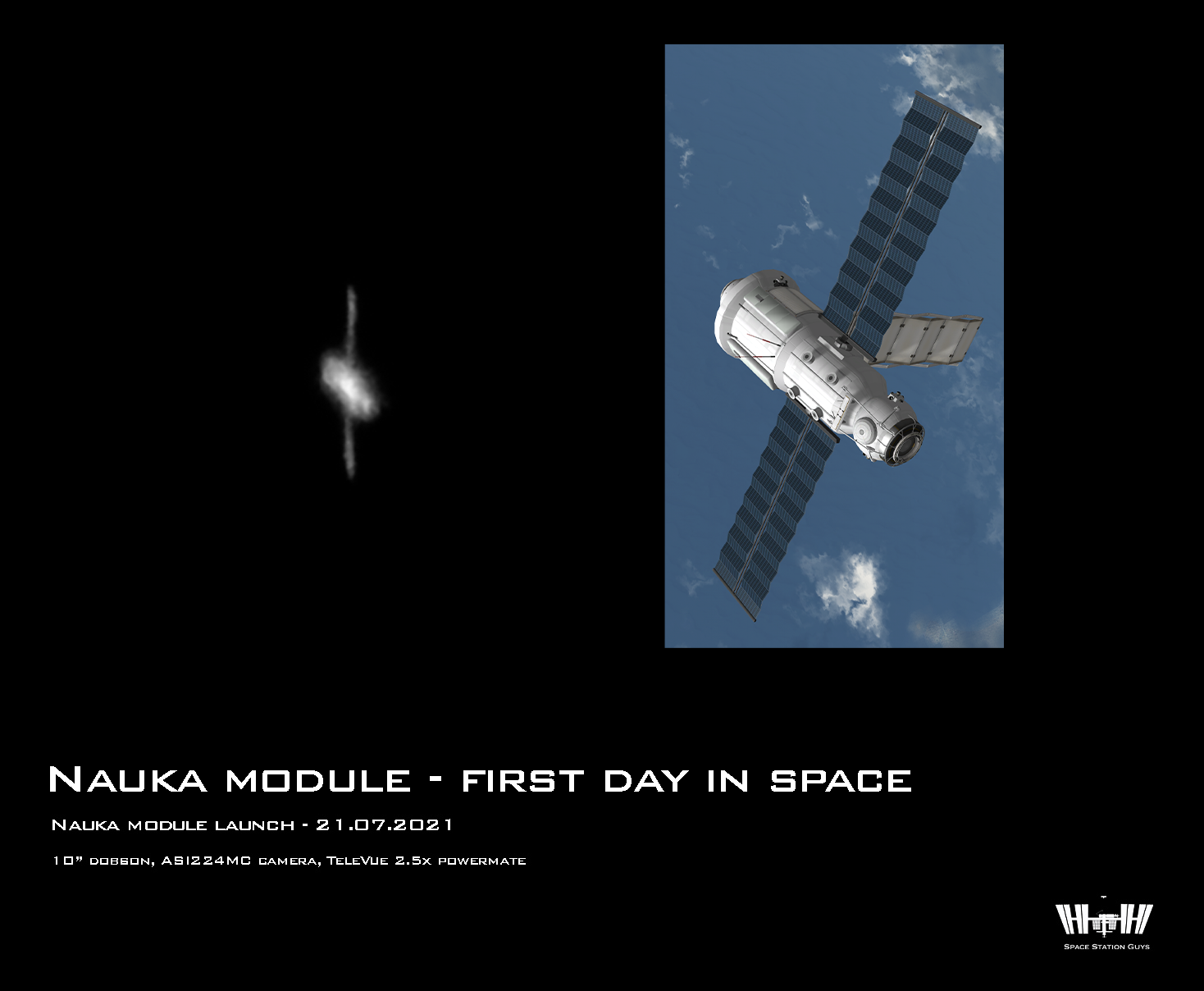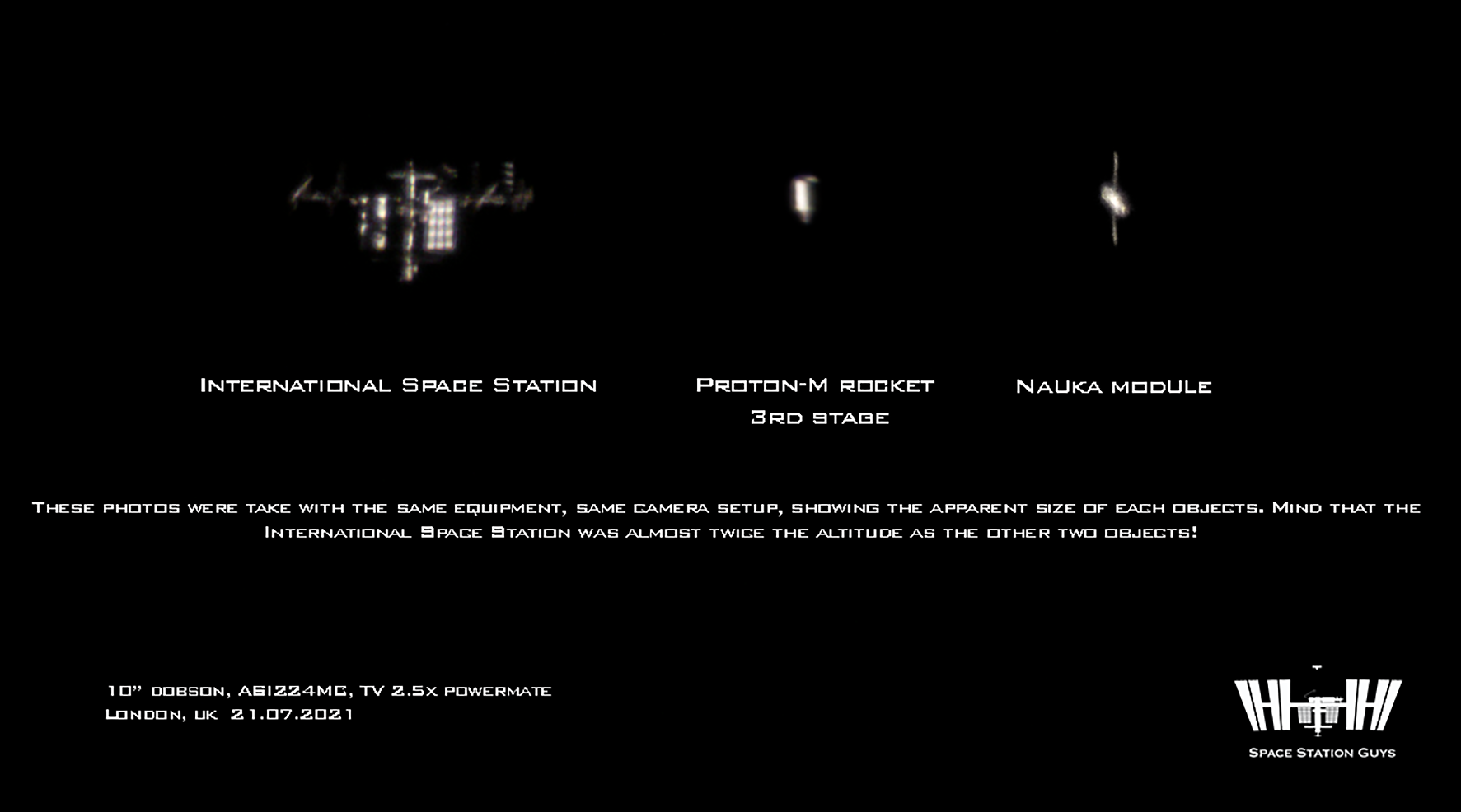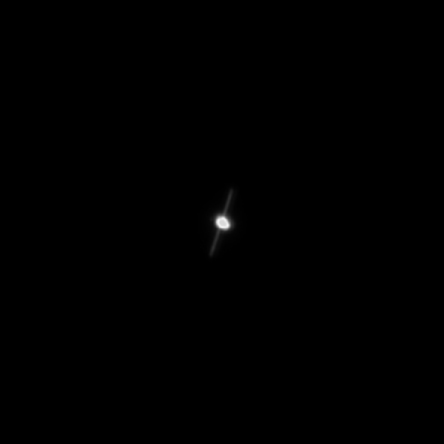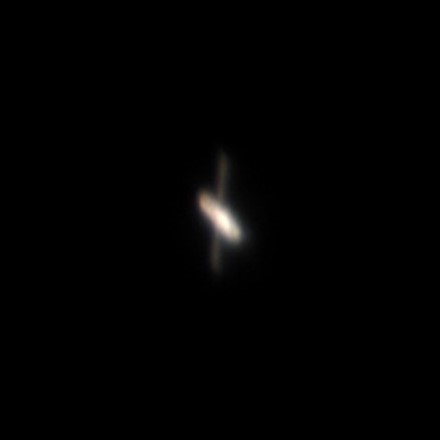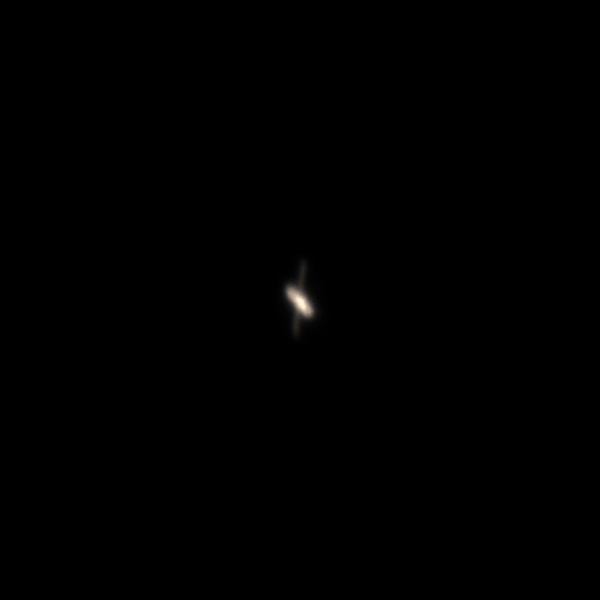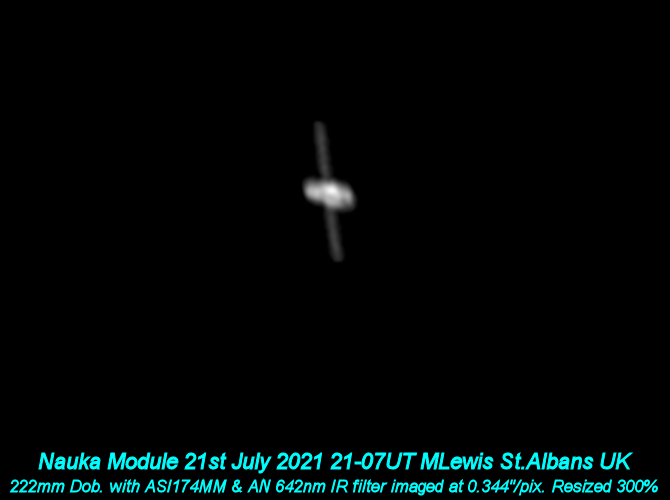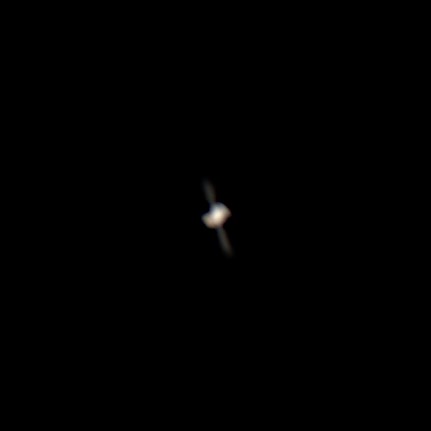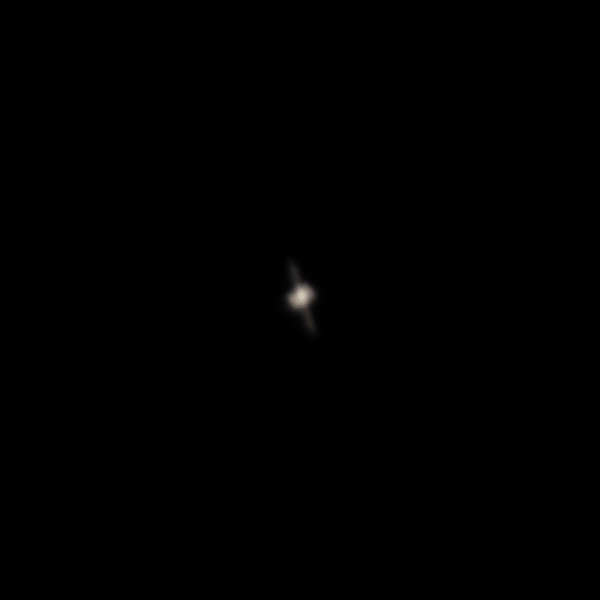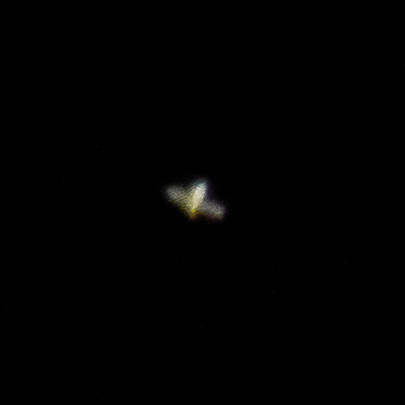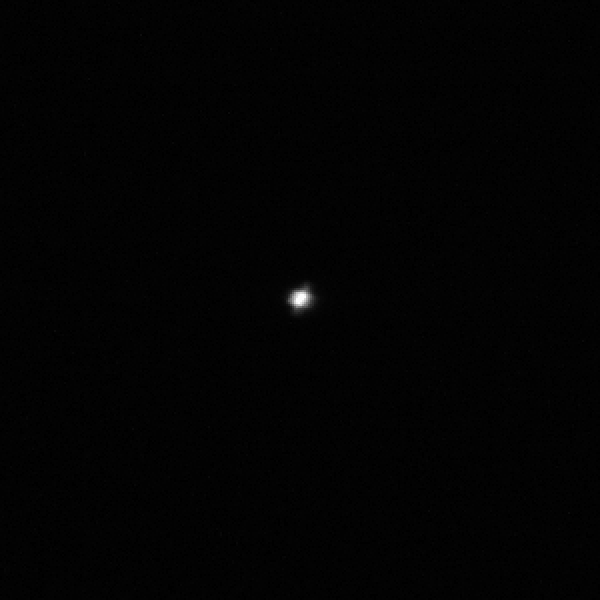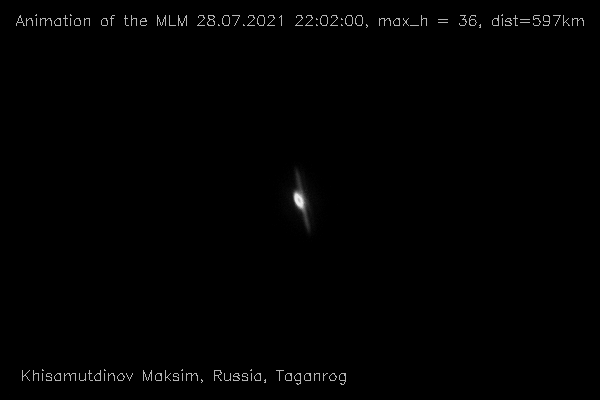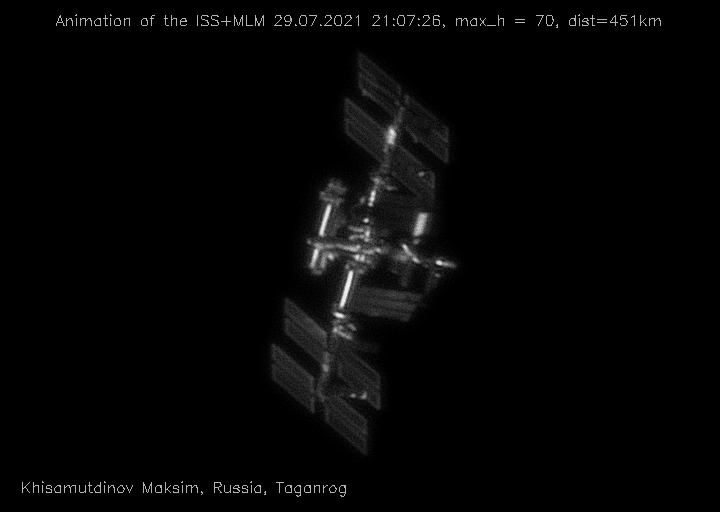Nauka module in space
(if you took a ground based amateur photo of the Nauka module and would like to contribute to this page, please contact me on metrolinaszabi@gmail.com)
Nauka (Science) module was finally launched on the 21st July 2021 after a long long delay. From London I could very well observe the International (ISS) overhead passes at that time and since the module will follow the ISS, I knew this could be the perfect moment to capture images of the newly launched segment. Weather was amazingly clear with very calm atmospheric conditions.
I managed to observe and photograph Nauka module on launch day (21st July) only a few hours after take off and also the next day (22nd July) too. Below you can see both images and an animation made from the best frames taken on the second day (22nd July).
Launch day was probably the hardest of all. Only guesses were circling on social media about where Nauka could be in relation to the International Space Station and when the flyby will occur from my location. Nauka was expected after the ISS flyby. After I finished imaging the ISS I looked west and I saw a very bright object travelling on a similar path to the ISS. I did the imaging, wow the object was travelling real fast. I knew immediately that this was it!
But then I looked up again and I saw an almost identical object to the one I just finished imaging. It was travelling the same direction and matching the brightness of the object appeared right after ISS. Started recording again, had less time because I could only start capturing it after the object passed zenith. Yes it was very confusing at first, but as soon as I opened the videos it all became clear what is what. The first object after the Space Station was the 3rd stage of the Proton-M rocket and then Nauka followed. When I opened the video and I saw the solar arrays I knew immediately that I just captured the new module at its closest to the observer.
Next day was somewhat easier, but most certainly not easy. I could prepare for Nauka module imaging slightly better and the outcome was slightly better too.
The animation I could put together was run through Topaz AI (by Bence Abelovszky). We regularly test my footages if it does any improvement without creating artifacts, fake details. Mostly it fails, luckily in this case it improved the details slightly.
Finally this is a summary video from my Youtube channel, all observations from both days at one place.
But as always, in this post you will find photos taken by other amateurs. What an amazing 8 days of challenge this was! Lots of uncertainty about overhead passes, visibiliy, and observability. I was glad to read that so many people took interest in actually trying to see the module with their own eyes. Space travel is cool!
21st July 2021
Ethan Roberts
Observed from United Kingdom. Equipment: Celestron 5se with the Nexstar mount and ASI290mm. Exposure time was 1.2ms with a gain of 150.
Gábor Sági
Observed from Oxford, United Kingdom. Equipment: Orion 14″ 355/1650 dobson at f9.2 (3300mm) 2x ED Barlow ZWO ASI224MC. Photo details: Expo Shutter 0.700ms Gain: 200
Martin Lewis
Martin was interviewed by Space.com and Bailey Universe.
22nd July 2021
Gábor Sági
Observed from Oxford, United Kingdom. Equipment: Orion 14″ 355/1650 dobson at f9.2 (3300mm) 2x ED Barlow ZWO ASI224MC. Photo details: Expo Shutter 0.700ms Gain: 200
Ralf Vandebergh
Observed from the Netherlands.
22nd July 2021
Eagle Kepr
The single good frame of Nauka over Suffolk, UK at 2212BST on a Celestron 8″ SCT + Canon 7D + 2x TC
27th July 2021
Olivér Nagy
Observed from Hungary. 300/1500 dobson Asi120MM expo 0.600 Gain 55 PIPP + Corel Photo Paint
28th July 2021
Maxim Khisamutdinov
I caught the 28.07.2021 (22:02 Moscow time) extreme flight of Science before docking, wrote two channels: overview and from the main caliber. It’s a pity it’s low, the height at the climax is only 36 degrees.
29th July 2021
Maxim Khisamutdinov
Shooting of Science as part of the ISS 29.07.2021 21:07 Moscow time after an emergency start of the engines as a result of the opening of the hatches at 19:45 Moscow time. I wrote two channels: overview and from the main caliber. Unfortunately, the sky was very bad.
